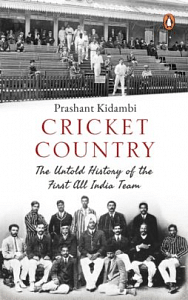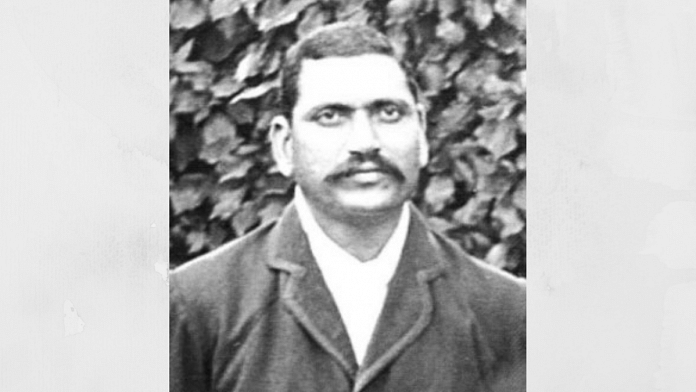The members of the first Indian cricket team sailed together to Britain, but they did not return as a single group. First to arrive back in Bombay, in late August, was the Maharaja of Patiala and his entourage. Bhupinder Singh told the waiting reporters that he was ‘unfeignedly sorry that he was unable to turn out oftener for the side which he took Home in such good hopes’. But he offered no explanation as to why he had abandoned the tour. The Maharaja left immediately in a special train to Patiala, where a ‘magnificent reception’ awaited him. Led by the chief officials of the state, a large crowd gathering at the ‘beautifully decorated’ railway station to greet the prince. Bhupinder was escorted to his Moti Bagh palace in a gilded carriage, accompanied by a large procession of ‘richly caparisoned elephants, horses, artillery, cavalry, and infantry’.
On 15 September 1911, eleven members of the Indian cricket team returned to Bombay on board the P&O liner S.S. Salsette. ‘All of them were in the pink of condition with the exception of two, who had evidently suffered somewhat from sea-sickness,’ noted one reporter. The players were ‘quite unanimous in their recognition of the magnificent hospitality accorded them in the Old Country’. In his press interviews, J.M. Divecha highlighted the benefits of their tour. The visit had offered the Indian cricketers ‘fine opportunities of studying the methods of play of the foremost batsmen and bowlers at Home’. Politically, too, much good had come out of the venture.
‘To the large majority of the British public, India was little more than a geographical expression,’ Divecha declared. Hence, the tour ‘had done something to bring India more vividly before the eyes of the public there’. The Parsi manager was equally sanguine about the Indian team’s performance in Britain. He highlighted the adversities that the team had to confront over the course of their three-month sojourn in the imperial metropolis: the unhelpful schedule, the constant travel and play, the remarkable heat wave, the unfamiliar playing conditions, and the absence of their captain and best batsman for the better part of the tour. In these circumstances, he told his interlocutors, the Indian team had acquitted itself ‘fairly well and under more favourable conditions it could have beaten all of the weaker of the first-class counties as well as all the second-class counties’.
Palwankar Baloo, the hero of the hour, was notably more critical in his assessment of the Indian performance. The most successful bowler on the tour revealed to reporters, eager to record every word, that ‘he did not look upon the result of the tour as satisfactory’. Baloo offered a clear-eyed assessment of the reasons for the Indian team’s disappointing showing. The absence of Ranji and Prince Hitendra Narayan from the original team, and the disappearance of Bhupinder Singh and Keki Mistry once it got to Britain, had weakened the batting. The late withdrawal of Maneck Chand, the fastest bowler in the country— ‘who could have come off wonderfully well on the fast, dry wickets they met with at Home’—had deprived the Indians of a potentially lethal spearhead. The eldest Palwankar also dwelt on the power dynamics that underpinned cricketing encounters between the colonizers and the colonized. Thus, ‘the bad arrangement of the programme’ had been a major factor in the poor performance of the Indians at the outset of the tour. It would have been ‘much better’, Baloo said, ‘if the first big matches had been interspersed with a few second-class fixtures, so that at the beginning in place of the monotonous series of heart-rending reverses they could have had some successes to cheer then up’. On the cricket pitch too, ‘the Indian batsmen were quite at sea with the express deliveries of the English fast bowlers and equally so with the googlies’.
Also read: India vs Pakistan isn’t about the cricket anymore. It’s just hype and jingoism
Baloo, noted one reporter, ‘was modest about his own prowess with the ball’. Instead of dwelling on his extraordinary feats, he chose to praise his fellow bowlers. It was left to Seshachari to acknowledge the contribution of his team-mate. Baloo, he told interviewers, ‘had been man of the side’ and the team ‘could not have got on without him’. Nor was the Tamilian wicket-keeper the only one to applaud the Dalit bowler. The remarkable feats of the Palwankar brothers had transformed them into public heroes. The day after the Indian team’s return to Bombay, a ceremony was held at the Hindu Gymkhana to honour the players who had represented the community. Ironically, Baloo and Shivram, who were treated with disdain when they had set out for London, now received special tokens of honour ‘in appreciation of their services to the team’. Baloo was presented with a gold medal, while his brother received a silver cup. The Palwankar brothers were also the guests of honour at a public ceremony organized by representatives of the so-called ‘Depressed Classes’ in Bombay. Notably, the address on this occasion was presented by a young man named Bhimrao Ambedkar, future leader of the Dalit masses and the principal architect of independent India’s Constitution.
…
The singularity of the attempt to forge a national team became apparent immediately after the end of the tour. Within days of their return, the cricketers who had played side by side for India were pitted against each other in teams that were constituted on the basis of religious identity. The year 1912 saw the entry of the Muslims into Bombay’s premier cricket competition, which had hitherto featured the Europeans, Parsis, and Hindus. Community trumped nation, and it was not until 1926–27, when the first MCC team came to the subcontinent, that an All-India team once again took to the cricket field. Five more years went by before a composite team travelled to Britain, in the summer of 1932, to play the first official Test matches in India’s cricketing history.
 This excerpt from Cricket Country: The Untold History of the First All India Team has been published with permission from Penguin Random House India.
This excerpt from Cricket Country: The Untold History of the First All India Team has been published with permission from Penguin Random House India.



